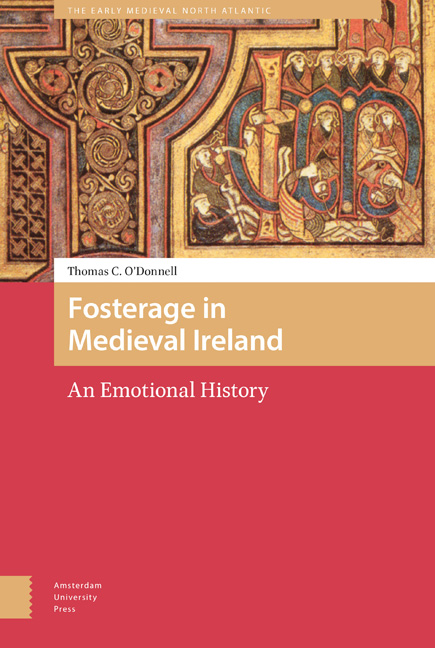Book contents
- Frontmatter
- Dedication
- Contents
- Abbreviations
- Acknowledgements
- Introduction
- 1 Cú Chulainn and Expressions of Foster Fatherhood
- 2 Who Makes a Foster Sibling?
- 3 Identity within Fosterage
- 4 Fosterage in the Medieval Irish Church
- 5 Animal Fosterage: A Bestial Parallel?
- Conclusion
- Bibliography
- About the Author
- Index
4 - Fosterage in the Medieval Irish Church
Published online by Cambridge University Press: 25 November 2020
- Frontmatter
- Dedication
- Contents
- Abbreviations
- Acknowledgements
- Introduction
- 1 Cú Chulainn and Expressions of Foster Fatherhood
- 2 Who Makes a Foster Sibling?
- 3 Identity within Fosterage
- 4 Fosterage in the Medieval Irish Church
- 5 Animal Fosterage: A Bestial Parallel?
- Conclusion
- Bibliography
- About the Author
- Index
Summary
Abstract
Irish religious writers used the language of fosterage to describe relationships saints created within and between monasteries. Fosterage was used because it focused on education and the idea of a family without a biological connection. Fosterage was used to describe oblation and monastic education. Tying the practices of monastic recruitment to such a social pillar within medieval Irish society insulated monasteries, to a certain extent, from the debates on oblation taking place on the Continent. Fosterage was based around education, feeding and care, and as such was readily incorporated into religious writing that described human relationships with a caring and nurturing divinity.
Keywords: saints’ lives, monastic education, oblation, mystic writing, Christ Child
Until now we have primarily been concerned with the foster family and the emotional ties that bound them. Yet, towards the end of the previous chapter fosterage terminology was seen outside of the foster family, as a means of understanding bonds formed outside the family. I have examined how the monastic education was approached in terms of fosterage to create a shared sense of identity between the pupils and to reinforce the superiority of the saint. In this chapter, I shall continue to analyse religious sources to see how far they pressed the metaphorical use of fosterage. Foster language was used to create community between pupils, but does this change when the fosterage terminology is used to describe relationships between adults and child? Can the whole foster family be created within a religious space, not just the ties of foster brotherhood? To answer this question the focus will be on the presentation of foster relationships between children and adult religious. The relationship extends beyond mortal realms to colour the religious experience of the Christ Child. Throughout the heavenly and more earthly relationships, fosterage is used as the primary means through which nurturing and educative relationships were understood. Fosterage was the tool to think with, the emotional lens through which relationships within the church were understood. Fosterage was used within the Irish church, both to bring children into the fold and to structure divine meditation.
Kerlouégan has noted how some of the fosterage language was used and Parkes saw an appreciable difference between secular and ecclesiastical fosterage.
- Type
- Chapter
- Information
- Fosterage in Medieval IrelandAn Emotional History, pp. 131 - 172Publisher: Amsterdam University PressPrint publication year: 2020



